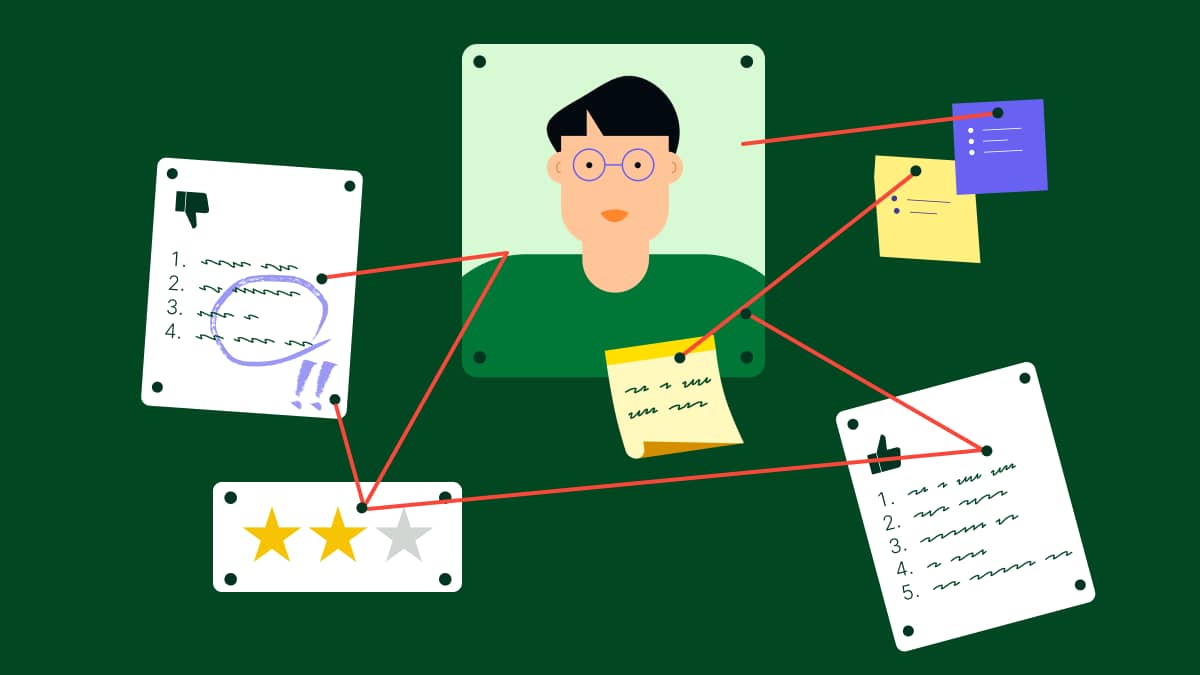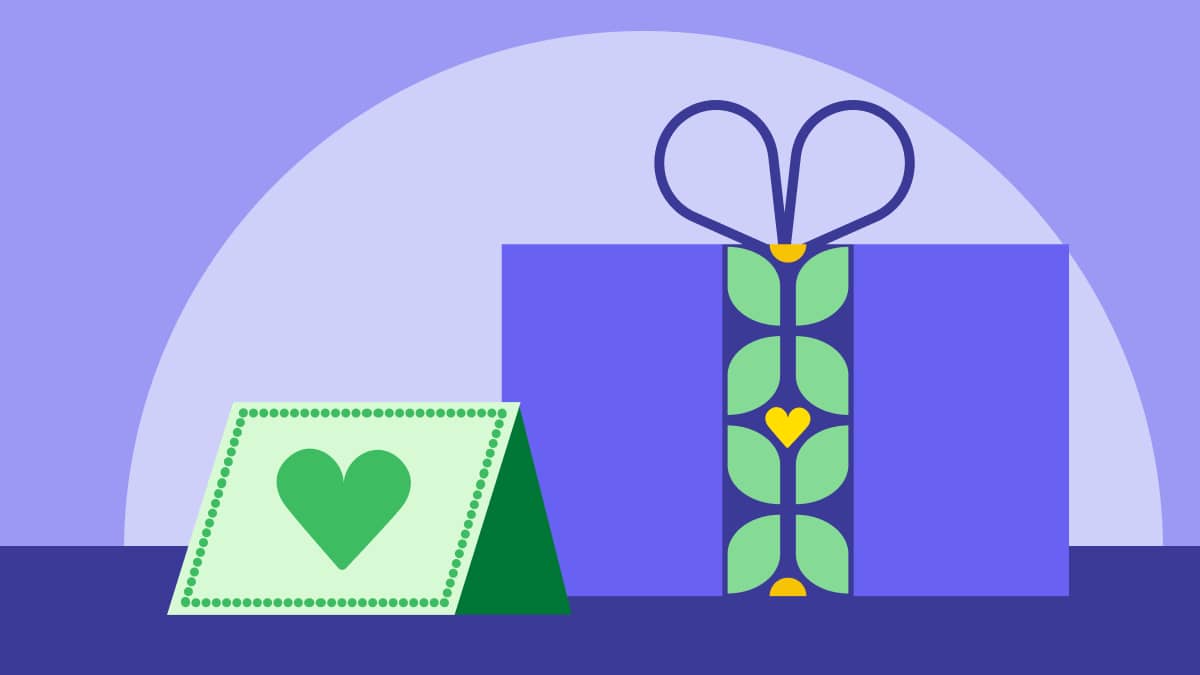Being known as “customer-obsessed” isn’t only possible for huge companies with big budgets. SMBs can reap the same rewards by tuning in to buyers’ changing needs and acting on them.
In this article, you’ll learn how to build a customer obsession strategy that drives retention, loyalty and long-term growth without enterprise-level resources.
Key takeaways from customer obsession
Customer obsession means always acting in your buyers’ best interest, from product design to support
It drives retention, loyalty and growth but requires consistent effort – not just one-off gestures
To be successfully customer-obsessed, align teams, map the buying journey, gather feedback and empower employees
Use Pipedrive’s pipelines, automations and reporting to manage and scale your customer obsession strategy – try it free for 14 days
What is customer obsession?
Customer obsession means putting your buyers at the center of every business decision.
It can take many forms, from rapidly reworking your onboarding flow based on user feedback to weekly founder Q&As. However, it always involves acting in your customers’ best interest – even when inconvenient.
Where “customer-centricity” refers to prioritizing buyers when making decisions, obsession means constantly and proactively acting on their needs.
Note: The term “customer obsession” is most closely associated with Amazon founder Jeff Bezos, who popularized it as a core business philosophy.
While SMB owners may not have the budget to outspend competitors, they can be faster, more personal and invest additional time in each relationship.
For example, Userlist obsesses over ensuring customers succeed using its email automation tools. Every new sign-up gets a free 60-minute roadmapping call to build a custom setup plan, plus access to done-for-you services if time is tight.
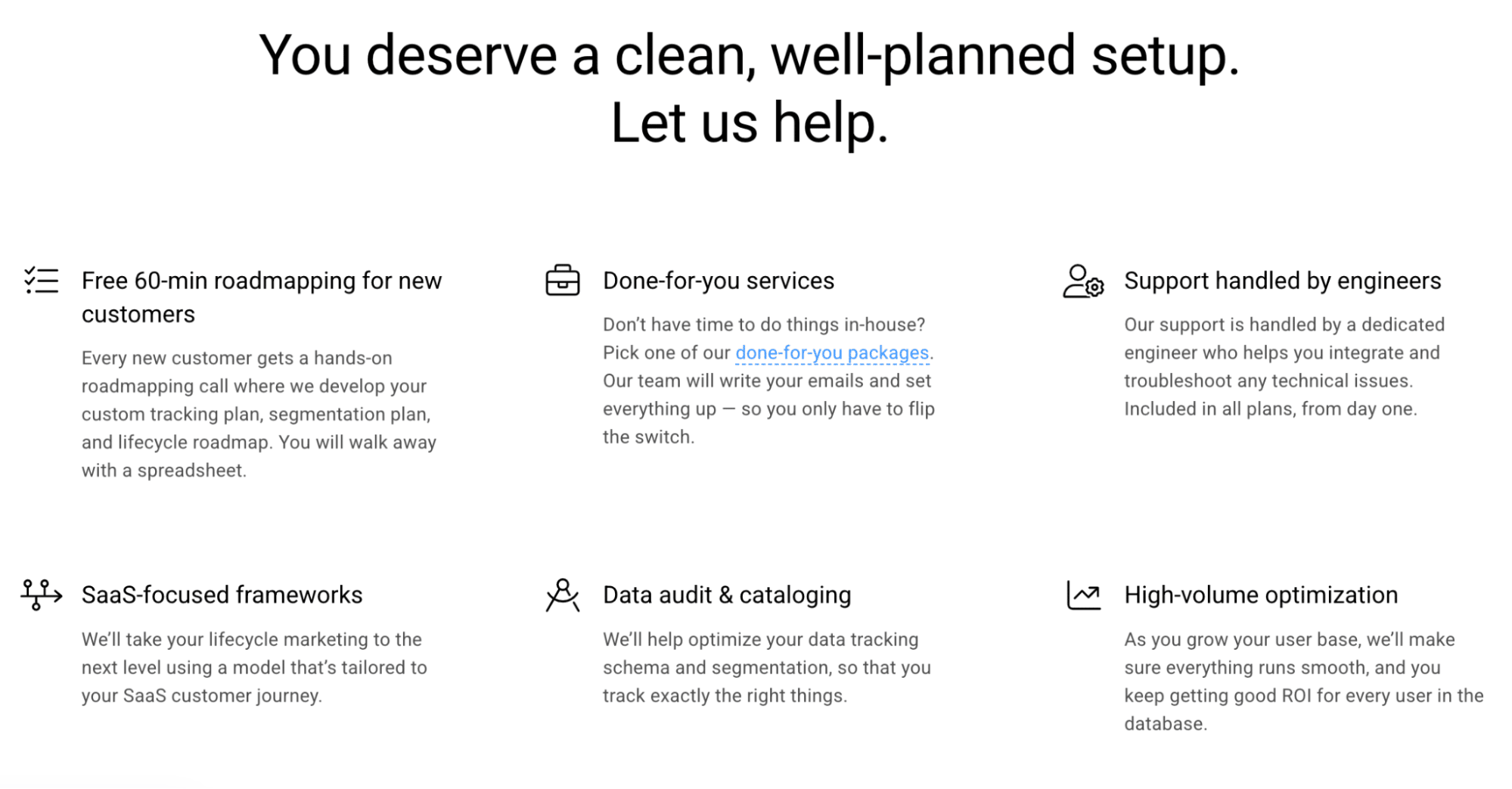
Engineers directly handle support, so even small product teams get high-quality help from day one.
Two-thirds of the most valuable global brands are considered highly “meaningful and different” to consumers. Building this emotional connection only happens when you consistently consider your customer base and become “obsessed” with the service you provide them.
Customer obsession strategies take many different forms for SMBs, including:
Responding to inquiries within minutes, not days
Following up after every support interaction to ensure resolution
Personalizing emails, onboarding and offers based on customer behavior
Routinely asking for feedback and acting on it
It’s one of the most powerful ways to stand out without spending big on flashy campaigns. However, customer obsession must become a long-term business strategy to be successful.
What are the data-backed benefits of customer obsession?
Obsessing over your customers is a proven driver of growth, loyalty and operational efficiency that can directly impact your bottom line.
According to McKinsey research, one of the top proven sales strategies for business-to-business (B2B) leaders is creating exciting, customer-first buying journeys.
Here are three of the top data-backed benefits.
Customer experience (CX) drives brand choice
Being customer-obsessed and promoting that fact can give you a competitive advantage that lands sales. 70% of consumers now choose brands based on the expectation of a good customer experience (CX).
Great CX is a key differentiator for smaller businesses in crowded markets. Buyers want to feel supported, respected and understood, and they’ll gravitate toward companies they hear will deliver.
Example: Imagine an accounting software firm known for offering hands-on training and fast, human support. Sales prospects choose them over bigger names because they trust the experience will be better.
Higher retention and customer lifetime value (CLV)
Customer-obsessed companies focus on long-term relations, leading to improved loyalty, renewals and customer lifetime value (CLV).
This additional effort offers a crucial edge for SMBs that rely on repeat customers. One study suggests that delighting customers significantly impacts brand loyalty and customer retention.
Example: Say a project management tool targets creative agencies. Instead of promoting features, the sales team checks in quarterly, helps customers optimize their workflows and sends small gifts at key milestones.
Clients stick around longer and often upgrade because they feel supported and valued.
Faster revenue growth
Companies that prioritize customer needs tend to outperform their peers financially. Forrester research indicates that customer-obsessed organizations report 41% faster revenue gains and 49% faster profit growth.
When budgets are tight, this momentum and value proposition can be the difference between surviving and scaling.
Example: A small HR tech startup may invite customers into early product betas, co-create features based on real use cases and publicly credit users for their input. That level of involvement creates loyal advocates who refer others and expand their accounts, driving sales revenue and sustainable success.
Your small business can achieve similar results with the proper strategic steps and some inspiring examples, which you’ll explore next.
How to build a customer-obsessed culture as an SMB: step-by-step
Becoming a customer-obsessed company means being clear about your business goals, staying consistent and creating small habits that compound over time.
While larger companies must spend time consulting with multiple stakeholders, SMBs can take a more direct approach.
Here are five practical steps any small business can take to build a customer-obsessed culture.
1. Align your team around a shared customer mission
Define what “great customer experience” means to your business and ensure everyone understands how their roles impact it.
Without alignment, leadership might push for short-term growth, while frontline staff focus on solving individual issues. A shared target connects everyone to the same goal.
Start by crafting a one-line mission statement that reflects how you’ll implement customer obsession.
For example, yours could be:
“We make our users feel supported, seen and valued every time they interact with us.”
In practice, that includes replying to all support tickets within an hour and proactively checking in with new customers after their first week.
This simple alignment creates consistency across your business. It gives executives and customer-facing teams a shared language for making decisions, solving problems and prioritizing tactics that matter most.
Once your mission is in place, here’s how to bring it to life:
Share real customer stories in team meetings to keep the mission top of mind
Make this promised impact part of onboarding for every new hire
Reinforce the mission regularly (not just once a year in a slide deck)
Celebrate behaviors that reflect the mission, like above-and-beyond support or thoughtful product feedback
True customer obsession starts with clarity and employee engagement. When everyone works toward the same vision, you create more consistent, meaningful experiences and a stronger bottom line.
2. Map your full customer journey to create more delightful experiences
Identify all the moments that shape a customer’s experience with your brand (from first contact to renewal or repeat purchase) so you can improve them.
The customer journey includes five key stages:
Awareness. A potential customer first hears about your product or service.
Consideration. They research and compare options to solve their problem.
Decision. They choose to buy and complete the onboarding process.
Retention. They continue using your product or service over time.
Advocacy. They become loyal fans who refer others or leave reviews.
Each person moves through these stages at their own pace and sometimes in a non-linear way. Mapping this customer journey reveals pain points, missed opportunities and ways to shift from reactive support to proactive experience design.
Start by building a simple, visual map of your customer lifecycle. For example, yours might include touchpoints like gated website content, social media marketing ads or re-engagement email campaigns.
To find this data, use tools like Google Analytics to analyze your website, customer surveys and platforms that give you real-time user behavior insights (e.g., Fullstory or Hotjar).
Add notes to this simple template to ensure you don’t miss anything:
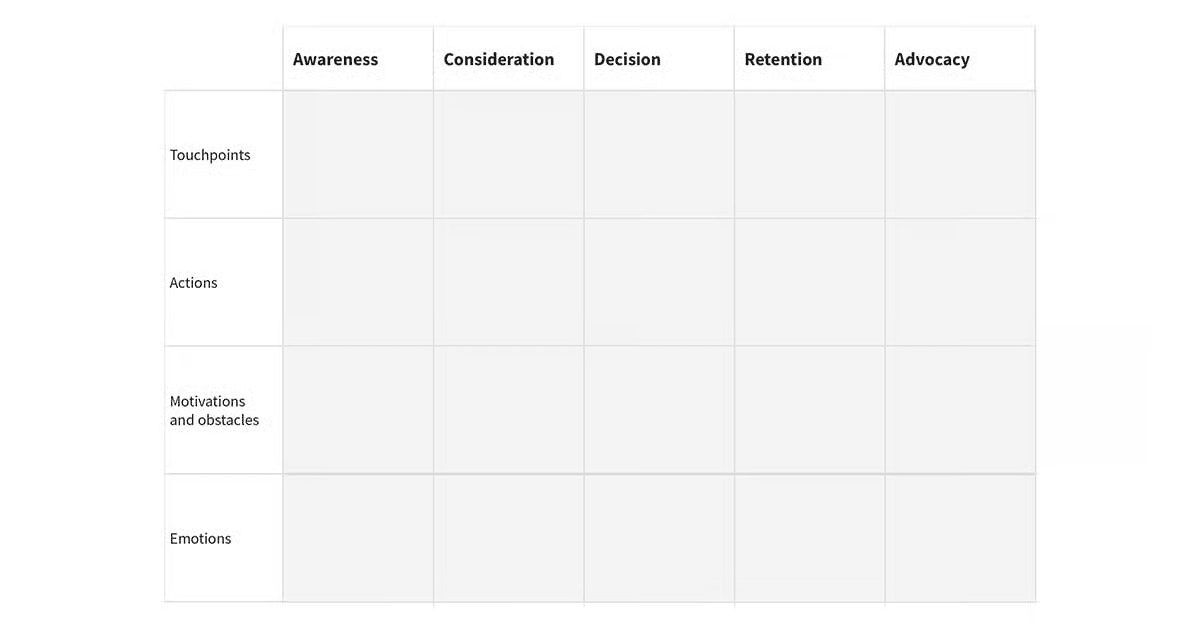
Download the template using the link below and fill in each section.
Download our customer journey map template
Once you’ve mapped the journey, here’s how to take action and improve it:
Highlight points where customers often get stuck or drop off
Identify handoff moments (e.g., sales to onboarding) and tighten the transitions
Look for easy ways to add delight, like a welcome email or check-in video
Share the map internally so every team sees where they fit into the customer’s path
A clear customer journey helps your team spot weak links, create smoother experiences and focus on what drives retention and loyalty.
3. Build feedback into everyday workflows to continually improve
Bake feedback into where your team already interacts with customers (e.g., support tickets, sales calls and onboarding check-ins). Use the insights to spot patterns and guide improvements.
Customer obsession isn’t about sending one big survey annually. It’s about listening consistently in the moments that matter most.
For example, build lightweight feedback loops into daily touchpoints with:
A quick rating after a live support chat
Check-in questions during onboarding
A “How was your call?” follow-up email after renewals or sales demos
Open-ended feedback fields in cancellation flows
Collecting insights regularly makes you more likely to catch early warning signs of unmet needs and spot easy wins.
Imagine a SaaS company that uses its customer relationship management (CRM) software to share feedback from every support conversation.
Here’s where it would add those notes in Pipedrive:
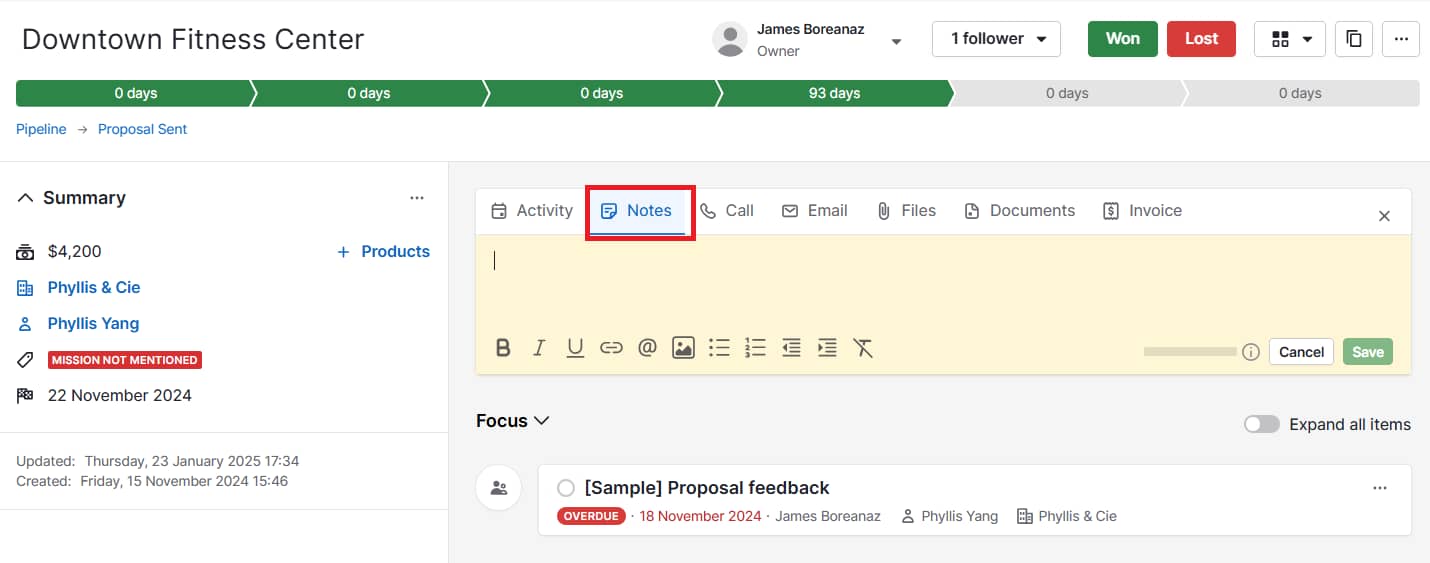
Sales and support teams review trends weekly, flag recurring issues and share fixes in a cross-functional Slack channel. This simple loop helps them improve faster and keeps customers happy.
Here’s how to make gathering feedback part of your company’s routine:
Choose 1–2 moments in your current workflow where feedback fits naturally
Use short, simple questions (e.g., “Was this helpful?” or “What could we do better?”)
Tag and organize feedback by theme so it’s easy to review
Share customer insights in team meetings to turn responses into action
Every suggestion is a chance to improve your product, messaging or service. When customers feel heard and see their input leads to change, they’re far more likely to stick around.
4. Empower employees to act in the customer’s best interest
Give your team the tools and flexibility to offer a quick discount, escalate a fix or flag a broken process. Even if it means going off-script, trust and flexibility drive experiences that clients and users appreciate.
Customers remember how you treat them in moments of need. When you empower employees, they can bend the rules slightly to drive new business or retain high-value accounts.
Confident teams also turn frustrating situations into loyalty-building wins. Connecting with people like this is even more crucial for B2B companies with longer sales cycles and multiple stakeholders to win over.
Trust and personal ownership of issues matter more in these situations than canned responses or rigid processes.
However, it’s crucial to align on what that empowerment actually looks like to prevent gaps. EY research suggests that while 77% of employers believe team members feel trusted and empowered, only 57% of employees agree.
For instance, say a video conferencing platform trains its team to build long-term relationships instead of pitching features. Sales reps deeply understand each prospect’s use case and suggest tailored solutions, even if it means recommending a lower-tier plan or a third-party integration.
This relationship selling builds trust, which leads to better conversations, stronger customer fit and a greater chance of referrals from prospects for whom the product wasn’t right.
Here’s how to empower your team to promote customer obsession:
Create guardrails (like discount limits or escalation rules) so employees can adapt to each customer without needing a script
Train teams to make decisions based on company values and customer outcomes, not just step-by-step procedures
Encourage proactive thinking, like “What’s best for the customer long-term?”
Recognize and reward team members who go above and beyond
Empowered, engaged employees are far more likely to deliver the kind of service that keeps customers coming back.
5. Track and share customer-focused metrics
To build a truly customer-obsessed culture, you need to monitor metrics that reflect how well you’re serving and retaining buyers.
Net Promoter Score (NPS) is usually a popular suggestion as it offers a quick sentiment overview. However, only 40.7% of contact centers rate NPS as “very important” anymore because it often misses real-time, actionable insight.

Instead, focus on operational and behavioral metrics that actually show how your customers experience your business daily.
Here are some of the most useful key performance indicators (KPIs) for SMBs to measure:
Customer obsession metric | Why it’s important |
Customer retention rate | Spot how many buyers stick around over time to identify customer loyalty trends and catch early signs of churn. Where to track: A CRM like Pipedrive or subscription tools (e.g., Stripe or Paddle). |
Repeat purchase rate | See how often existing customers return to gauge trust and product-market fit. Where to track: E-commerce platforms (e.g., Shopify or WooCommerce) or tagged deal data in your CRM. |
Time to first value (TTFV) | Measure how long it takes for a new customer to see real value so you can reduce drop-off during onboarding. Where to track: CRM milestones and product analytics tools (e.g., Mixpanel or Amplitude). |
Support resolution time | Find out how quickly you resolve issues to improve satisfaction and reduce frustration. Where to track: Help desk tools (e.g., Help Scout or Intercom) or via custom fields in Pipedrive. |
Gather feedback after key customer interactions to improve support and spot service gaps in real time. Where to track: Customer support tools (e.g., Intercom or Help Scout), feedback platforms (e.g., Typeform or Contentsquare) or follow-up emails. | |
Customer churn reasons | Collect insights into why customers cancel or downgrade to fix root causes, not just symptoms. Where to track: Cancellation surveys, tagged notes in a CRM system or feedback platforms. |
Tracking this customer data is just the first step. The real value comes from sharing these insights across your team so everyone feels connected to the CX.
Here’s how you put these metrics to use:
Celebrate positive trends and wins in Slack or team meetings
Highlight one “valuable insight of the week” to keep attention on your impact
Use Pipedrive’s sales reporting features that surface trends automatically
Tie team goals to at least one customer-obsessed metric (e.g., reducing resolution time)
Use Pipedrive’s reporting dashboards to track additional KPIs like time in stage (e.g., how long onboarding takes) to tell you if you’re improving your experience.
Here’s where you’d track deal duration and add columns like “stage entered”:
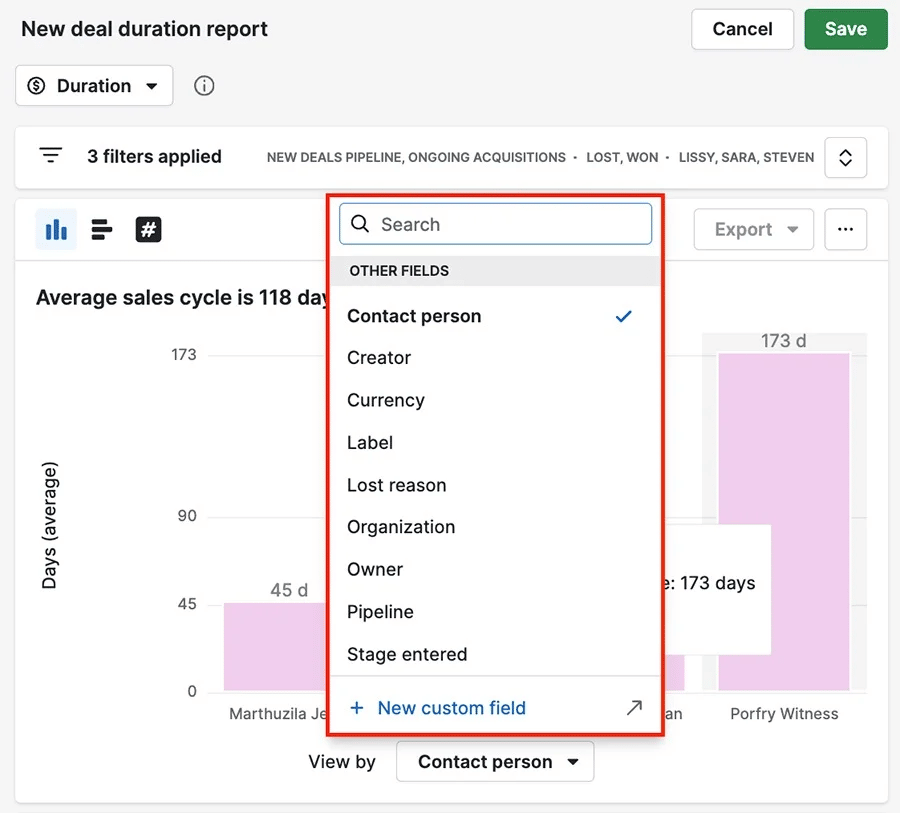
When everyone sees the link between their work and customer engagement, they’re more likely to stay motivated to keep improving – that’s what customer obsession is all about.
4 examples of customer-obsessed companies on a smaller scale
Giant corporations like Disney can afford meticulous attention to detail in their customer obsession tactics to create magical guest experiences. Most SMBs don’t have the same budget, headcount or brand power, but can still deliver incredible CXs by being intentional, fast-moving and deeply focused on user needs.
Here are four examples of customer obsession from SMBs doing it right:
Customer-obsessed company | Notable qualities |
|
(HR and hiring support for remote teams) |
|
|
(calendar scheduling tool) |
|
|
(privacy-focused website analytics) |
|
|
(async coaching and messaging platform) |
|
These customer obsession examples show that you don’t need a massive team or budget. Success just takes focus, consistency and care.
SMBs win by being responsive, transparent and deeply tuned in to their customers’ daily challenges. The right tools can support their buyer-focused efforts all the way.
How to optimize your customer obsession strategy using Pipedrive
Pipedrive’s suite of features helps you plan, deliver and improve your new customer obsession strategy. Use it to align your team, automate routine tasks and make data-backed decisions that put customers first.
Start by creating custom pipelines for onboarding, support resolution or sales expansion opportunities. These visual representations help you see where each customer is in their journey and quickly identify friction points:
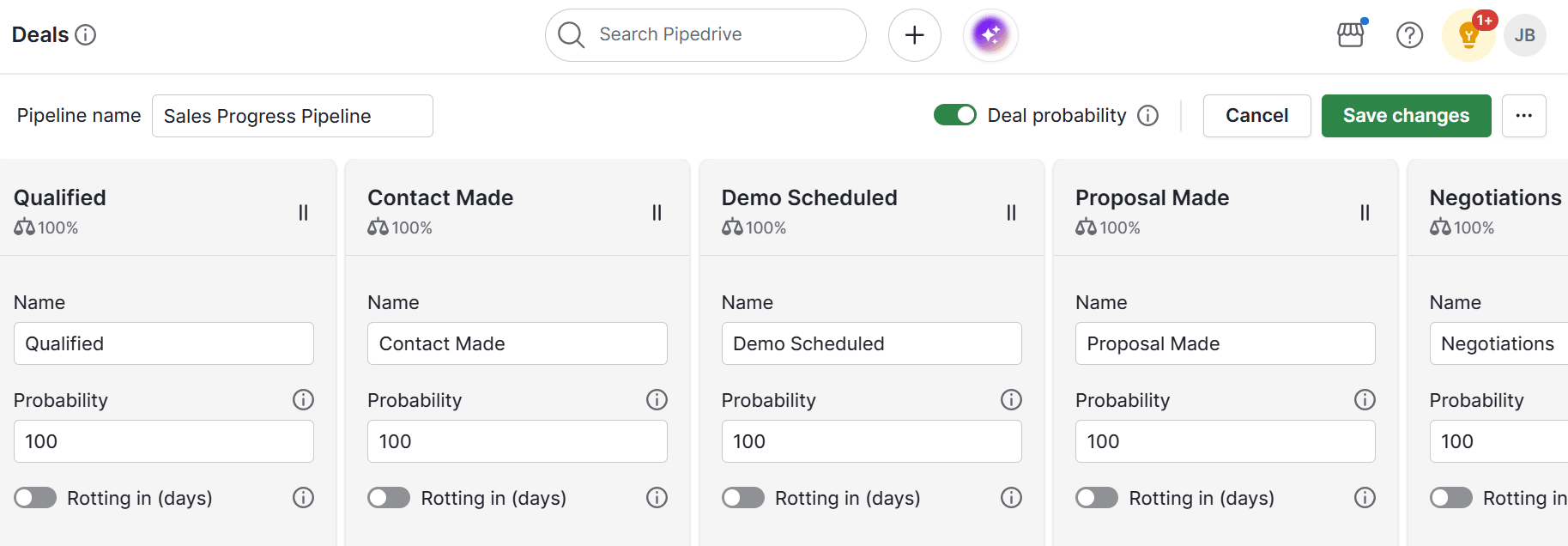
For example, you could build a post-sale onboarding pipeline to track new customers from contract signed to “first value”, pinpointing stalled deals to trigger check-ins.
Custom fields and notes capture feedback during calls, demos and support touchpoints. Tag common themes (e.g., “UI confusion” or “pricing objection”) so your team can review patterns regularly.
Learn all about custom fields in this short video:
Say you log multiple “setup concerns” from early-stage leads. Marketing then creates a short video walkthrough to ease those concerns in future outreach.
Workflow automations help you create moments of delight. For instance, you can trigger alerts for birthdays, contract anniversaries or long-term inactivity.
Here’s where automations live in Pipedrive:
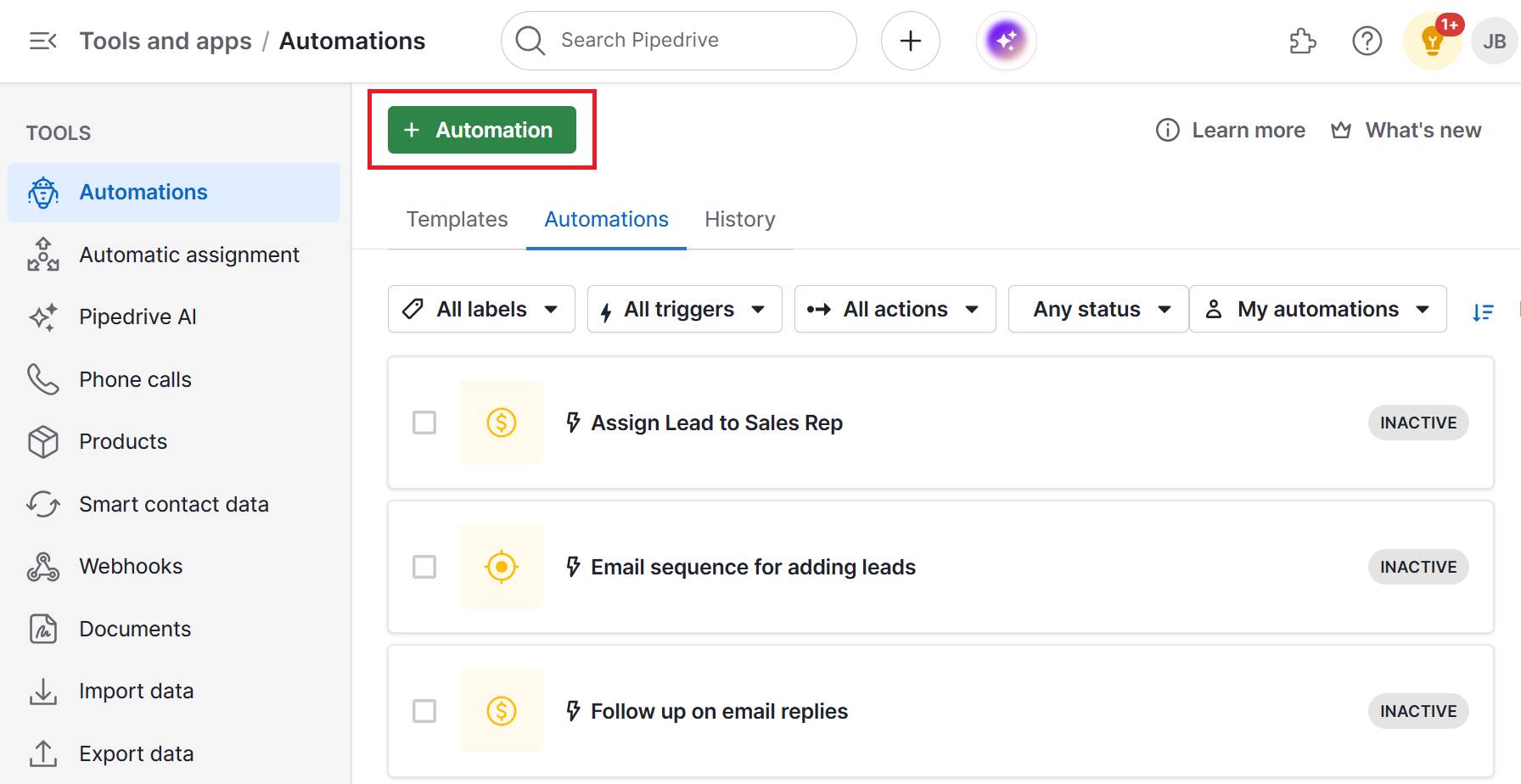
If a customer hasn’t logged in for 30 days, set up a notification to send a personalized check-in email offering help.
Finally, integrating Pipedrive with your support, marketing and product tools through Marketplace ensures no siloed information:

Say a customer submits a bug via your help desk. The integration ensures that the issue auto-tags in their Pipedrive record, delaying renewal outreach from the account manager until you resolve it.
For example, entertainment company Pro Arts uses Pipedrive to personalize all correspondence and exceed customer expectations:
When used strategically, Pipedrive becomes more than a sales tool. It turns into a visibility layer for customer obsession, helping you stay proactive, consistent and personal at every stage.
Final thoughts
Being truly obsessed about your customers leads to better experiences, higher retention and faster, sustainable growth.
To make it stick, you need the right tools to plan, track and improve every step of the journey. A robust CRM helps you stay organized, spot trends and act on real customer insights without slowing your team down.
Try Pipedrive free for 14 days to develop a strategy that drives sales, builds stronger relationships with loyal customers and puts your SMB on the map.
